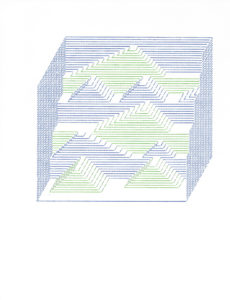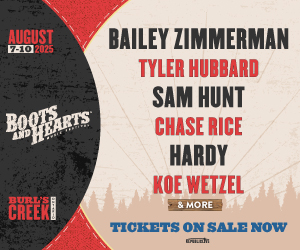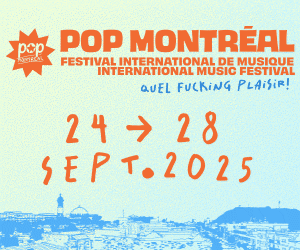The Remington Performer: Inside Kevin Stebner's Typewriter Fantasies
The proto-typical poet and musician is embracing concrete poetry outside of the margins.
By Christine Leonard
Photo by Joe Stebner-Reina
- Published on

Giant Steps, by Kevin Stebner
“I feel like I’ve always been a multidisciplinarian,” says Stebner. “Playing in a bunch of different bands and doing a lot of writing and video game projects. I’ve always wanted to try my hand at a variety of things.” Stebner explains. “Early on in the pandemic, I was actually gifted a typewriter by a friend who salvaged it from an electronics recycling area. That machine in particular, the Remington Performer, is kind of my favourite because I’ve learned it really well and know all of its nuances.”
Bringing his inner vision to the page has become a novel experience for Stebner who has numerous art residencies and innovative installations to his credit. Working under the moniker GreyScreen he has been responsible for generating interactive visual displays that manipulate sound and light to form “sound bombs,” “powergrids” and “Rom-hacks” that defy genre and transmute outdated technologies into “proverbial canvases.”
“I specifically like the typewriter because although I’ve worked in all of these diverse disciplines I’ve never really had the ability to make my hand do what my brain saw in terms of visual art. So, this very rigid tool of a typewriter actually gave me the means to do those things.”

Slopen by Kevin Stebner
The latest glitch in his matrix is both unexpected and decidedly analog. A challenge that has proven to be an intriguing detour for the innovative and intuitive Stebner as he breathes new life into old devices to convey his typographical poetics.
“I always have one hand on the carriage and one on the keys, so I’m not really typing the way you normally would. I’m always in the grid and working off the centre and moving around. It’s very different from the way a lot of concrete poets work but, because of my background, I see what I’m doing with a typewriter grid in a very similar way to the way one would approach pixel art because I can fit in those squares and work in those confines.”
According to Stebner there are still dedicated typewriter enthusiasts out there who are not only refurbishing vintage machines and sharing their love of filling the room with the sound of clicking and chimes, but are creating ribbons in a rainbow of hues. “I’ve learned how to repair them into working order because they seize, and they bend and break. You have to learn how to keep these babies alive, like a mechanic or something.”
A collector of administrative antiquities and one-man secretarial pool with cursive ties to a plethora of small presses and indie publishing houses, Stebner pushes the boundaries of concrete poetry with a full knowledge of the rules he’s breaking. Building his lyrical shapes one keystroke at a time, he moves letters across the page in patterns that reveal a panorama of ideas and imagery.
“I probably have about eight different machines that do different things. I have one with a very large carriage, I have one with unique character sets, and I have an Arabic one and a Cyrillic one. I’m always on the hunt for weird typefaces. Everything is manual, I have an electric one that never gets used because there’s something about the physical means. Like every keystroke I do is from my own physical force of putting it on to paper.”
Weaving together colour, form, and function, each of Stebner’s painstakingly typewritten pieces is an invitation to consider a geometric and intellectual riddle. The solutions to be interpreted and deciphered by the individual viewer/reader.

Matryoshka 4 by Kevin Stebner
“On the poetry page everything is two dimensional. Visually we understand depth but we don’t approach the page as a space that has depth. I’m trying to find ways to explore delving into the page. Tricking your eye and doing more with spatial awareness of a page. Poetry is always like text on a flagpole. A line to the left. It’s an incredibly limiting convention that’s always adhered to. How do you do something different beyond the convention? Using tech in a different space is weirdly freeing. The way you use tech can convey what you’re actually saying beyond the word itself.”
Keep tabs on Kevin Stebner’s atypical collection of poetic artwork constructed solely on typewriters during his upcoming gallery show, ALLCAPSE : A Pop-Up Art Exhibition, featuring the work of Stebner and John F. Gerrard on Friday, June 10.


By Alexia Bréard-Anderson
Montréal’s premier gathering for electronic music and digital creativity returns with an immersive three-act program bridging AI, XR, Indigenous tech, and ecological imagination.
By Adriel Smiley
Ian Mark Kimanje’s powerful documentary traces Carnival’s roots from slavery and survival to global celebration.













